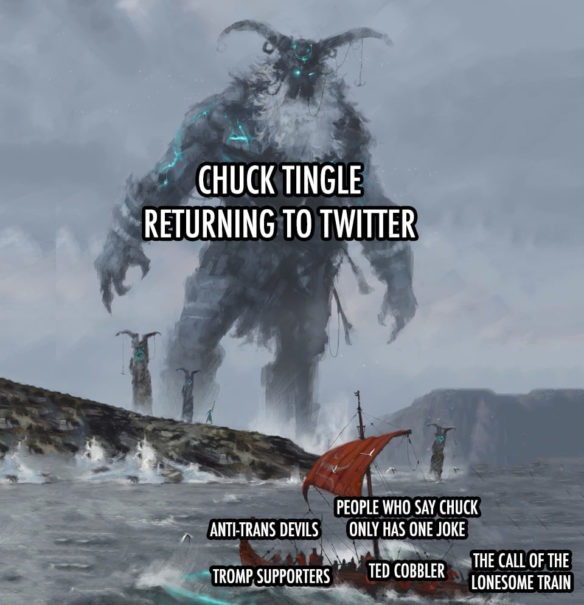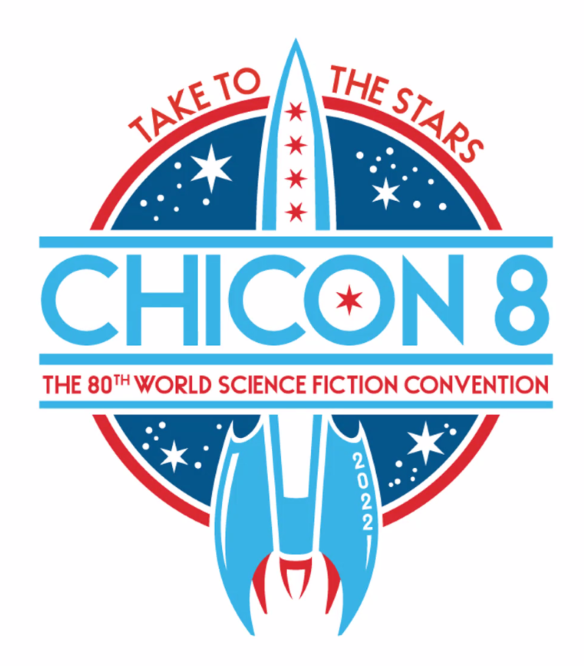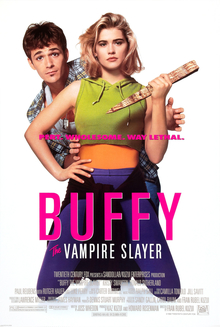(1) RETURN OF A MAN CALLED CHUCK. Chuck Tingle’s Twitter account has been restored. He tweeted thanks to some who helped him along the way.

(2) SMITHSONIAN FUTURES EXHIBIT. Octavia Butler, one of her typewriters, and some newly commissioned art, will be part of the Smithsonian’s “Futures That Unite” exhibit that opens in November reports Smithsonian Magazine: “The Pioneering Sci-Fi Writer Octavia E. Butler Joins a Pantheon of Celebrated Futurists”. The complete set of Nettrice Gaskins’ images can be viewed here.

…In developing science fiction writing as her craft, after disparaging a campy sci-fi flick, Butler became a master storyteller whose unique works revealed how members of the African diaspora could use their own power to shape alternative futures. Butler is one of the futurists who will be honored in the Smithsonian’s expansive “Futures” exhibition, which will mark the Institution’s 175th anniversary and will debut in the Arts and Industries Building late this year.
“Anchoring her in the exhibition in the hall that we call ‘Futures That Unite’ is really important because her books have united people across time and space and ages and identities,” says Monica Montgomery, the exhibition team’s social justice curator. While many of Butler’s works are dystopian in nature, “We know that ultimately, her work aims to unite and go from what does the future of sorrow look like to what does the future of strength look like.”…
A Smithsonian artifact—an Olivetti typewriter—from the collections of the Anacostia Community Museum will represent Butler’s life in the “Futures” show. The museum received it directly from Butler in 2004, when it went on view in the exhibition, “All the Stories Are True,” explains Jennifer Sieck, the museum’s collections researcher. “Octavia Butler was one of the invited authors, and not only did she generously share her presence, but she also donated the typewriter to the museum, along with the ribbons.”
…In addition to the typewriter, Butler will be represented by a newly commissioned work of art by digital artist Nettrice Gaskins, who uses algorithms meant to be employed in machine learning to produce artworks. She will provide a series of portraits of featured futurists, including herself. Others include author and disability rights advocate Helen Keller, American sculptor and political activist Isamu Noguchi, and National Farmworkers Association co-founders Dolores Huerta and Cesar Chavez, inventor Alexander Graham Bell, frontline researchers in the global race for a Covid vaccine Barney Graham and Kizzmekia Corbett, computer scientist Margaret Hamilton, non-binary professional skateboarder Leo Baker, the multi-disciplinary educator Buckminster Fuller and the civil rights activist Floyd McKissick.
“I used styles that corresponded with each futurist,” Gaskins says. “When I created the futurist portraits, I collaborated with the A.I. [artificial intelligence] and fed the machine different styles to see what the results would be, then I chose the ones that captured what I imagined.” Mirroring characters in Butler’s Parables series, “I’m finding ways to use A.I. to recognize my own power to affect and direct change or chance,” she says….
(3) 2022 WORLDCON HIKING MEMBERSHIP RATE. Chicon 8, the 2022 Worldcon, is raising its attending membership rate to $190 on August 1. So if you want to beat the deadline, click here: Memberships – Chicon 8. The new rate will be good until December 20, 2021.

(4) SELF-PUBLISHING DURING THE PANDEMIC. Mike Allen is interviewed by Melanie Stormm at the SPECPO blog: “The Uncertain Journey of Shirley Jackson Finalist, Aftermath…”
…“I came to horror as a way of wrestling with the darkness in human nature, the darkness in my own nature,” Mike said, speaking to the autobiographical quality of some of his poems. “I had to make peace with my understanding of the world. The fact that the things Edgar Allen Poe was writing about were not alien, but part of the human experience.”
When he announced this, it hit me and made things plain. I understood my own tendency to like dark things: they seemed to tell the truth and I turn to fiction and poetry as much for truth as I do for adventure. These sorts of work found all the things our minds want to reject as part of life and wove them into the narrative. It’s about acceptance and not only thrill. I found myself reflecting internally on the kind of catharsis that comes from reading work like Aftermath and on my own desire to escape the Jeremiad news cycle. And yet, in the middle of the pandemic, life had been stressful for me, but I found that I wasn’t suffering from the same psychological horror that others I cared about suffered from. I felt strangely spared the extent of shock and sleepless nights others had, spared the existential crisis, the headlines (and very real events) created in others. Not because I was brighter or wiser or more resilient. In fact, it felt as though the level of peace I had was gifted to me.
As though reading the new question in my mind, Mike said: “In a way, horror inoculates you. There’s an addictive quality to it as it produces a lot of chemical activity in your brain, but it also inoculates you.” Mike paused, wondering whether ‘inoculate’ was the best word given the situation the world faced. Then, after a moment, he nodded. “Yeah, it inoculates you. You come to accept that the worse can happen, and that idea maybe shocks you less than it does other people.”…
(5) STAN’S ORIGIN STORY. J. Hoberman chronicles “Marvel’s Ringmaster” at the New York Review of Books. “Under Stan Lee’s guidance, Marvel marketed not only its characters but also the men who created them.” The first part of the article is open, but the rest is behind a paywall.
…The comic book industry was largely created by first-generation Americans. Lee’s Romanian immigrant father was a fabric cutter in New York City’s garment industry; the family struggled during the Great Depression. Skipping grades, the faster to finish his education and get a job, Lee attended DeWitt Clinton, a huge all-boys public high school in the Bronx that produced many distinguished alumni. Lionel Trilling, Irving Howe, A.M. Rosenthal, and William Kunstler were graduates. Lee’s classmates might have included the future playwright Paddy Chayefsky, the disgraced studio boss David Begelman, the Get Smart actor Don Adams, and (before he dropped out) the champion boxer Sugar Ray Robinson, as well as Richard Avedon and James Baldwin. Lee worked on the school literary magazine, less as a writer or editor than a self-appointed publicity director….
(6) LEARNING FROM WRONG GUESSES. Simon Evans discusses “What Sci Fi novels can teach us about uncertainty” in The Spectator.
…Literature has no single golden age, but some genre fiction does, and Science Fiction had a long one, stretching from the mid-30s all the way up to the mid 50s – up, perhaps, to Crick and Watson and the genuinely astounding discovery of DNA with which it briefly struggled to compete. Soon, we’d been to the moon too, and the race to speculate before science could accumulate became a lot tighter.
Sci-Fi thrives off society’s sense of the unknown. The fiction of this era is worth reading as much to register the blind spots, as to applaud the bulls’ eyes. These are generally by way of under estimating the societal changes which were to sweep across the West after WW2. Many authors anticipate nuclear annihilation, and subsequent genetic mutation, but there does not appear to be a single one who saw feminism coming.
Instead, stories by Asimov, Heinlein and the like bristle with square jawed 21st century heroes, wise cracking journalists, distracted academics and Blondes, Blondes, Blondes. Some of the predicted innovations in tech are hauntingly accurate, but the action remains firmly rooted in a social milieu Raymond Chandler would recognise. But this is instructive in itself and tells us something about the business of understanding what can, and cannot change, and how quickly. Many people envisaged the rise of a global pandemic at some point in the future but not many paused to consider its social implications – plus ça change. …
(7) VAMPIRE CLEARANCE SALE. FX dropped this trailer for season 3 of What We Do In The Shadows.
An evil bucket that’s great for collecting evil. See how the vampires are decluttering for the all-new season premiering Sept 2nd on FX.
(8) MEDIA BIRTHDAY.

July 31, 1992 – Twenty-nine years ago the Buffy the Vampire Slayer film premiered. Written by Joss Whedon, it was directed by Fran Rubel Kuzui and produced by Howard Rosenman and Kaz Kuzui. The cast was Kristy Swanson, Donald Sutherland, Paul Reubens, Rutger Hauer and Luke Perry. It got middling reviews from the critics and currently holds a rating of just forty-three percent at Rotten Tomatoes. It neither made nor lost money at the box office.
It of course would spawn the later Buffy the Vampire Slayer and the Angel series as well. The former was both a critical and rating success. The Buffy the Vampire Slayer series would win a Hugo at Torcon 3.
(9) TODAY’S BIRTHDAYS.
[Compiled by Cat Eldridge.]
- Born July 31, 1932 — Ted Cassidy. He’s best known for the role of Lurch on The Addams Family in the mid-1960s. If you’ve got a good ear, you’ll recall that he narrated The Incredible Hulk series. And he played the part of the android Ruk in the episode “What Are Little Girls Made Of?” on Trek, and provided the voices of the more strident version of Balok in the “The Corbomite Maneuver” episode and the Gorn in the “Arena” episode. In The Man from U.N.C.L.E. “The Napoleon’s Tomb Affair” episode, he was Edgar, who kidnapped, tortured, and repeatedly attempted to kill Napoleon and Illya. And failed magnificently. (Died 1979.)
- Born July 31, 1951 — Jo Bannister, 70. Though best known as a most excellent British crime fiction novelist, she has three SF novels to her credit, all written in the early Eighties — The Matrix, The Winter Plain and A Cactus Garden. ISFDB lists one short story by her as genre, “Howler”, but I wasn’t at all aware that Ellery Queen’s Mystery Magazine printed genre fiction which is where it appeared first though y’all corrected me when I ran this Birthday note first several years back.
- Born July 31, 1955 — Daniel M. Kimmel, 66. His essays on classic genre films were being published in The Internet Review of Science Fiction from 2005–2010 and are now in the Space and Time magazine. He is the 2018 recipient of the Skylark Award given by the New England Science Fiction Association.
- Born July 31, 1956 — Michael Biehn, 65. Best known in genre circles as Sgt. Kyle Reese in The Terminator and Terminator 2: Judgment Day, Cpl. Dwayne Hicks in Aliens and Lt. Coffey in The Abyss. He was also The Sandman in a single episode of Logan’s Run. Though not even genre adjacent, he was Johnny Ringo in the magnitude Tombstone film. Likewise he was in The Magnificent Seven series as Chris Larabee.
- Born July 31, 1959 — Kim Newman, 62. Though best known for his Anno Dracula series, I’d like to single him out for his early work, Nightmare Movies: A critical history of the horror film, 1968–88, a very serious history of horror films. It was followed up with the equally great Wild West Movies: Or How the West Was Found, Won, Lost, Lied About, Filmed and Forgotten. He’s also a prolific genre writer and his first published novel, The Night Mayor, sounds very intriguing. (CE)
- Born July 31, 1962 — Wesley Snipes, 59. The first actor to be Blade in the Blade film franchise where I thought he made the perfect Blade. (There’s a new Blade actor though they name escapes right now.) I also like him as Simon Phoenix in Demolition Man. And he was Aman in Gallowwalkers, a Western horror film that is really, really bad. How bad? It gets an eleven percent rating by audience reviewers at Rotten Tomatoes.
- Born July 31, 1976 — John Joseph Adams, 45. Anthologist of whom I’m very fond of The Improbable Adventures of Sherlock Holmes and Dead Man’s Hand: An Anthology of the Weird West which he did. He was the Assistant Editor at The Magazine of Fantasy & Science Fiction for nearly a decade, and he’s been editing both Lightspeed and Fantasy magazines since the early part of the previous decade.
(10) COMICS SECTION.
- Alley Oop isn’t ready for this cosmic discovery.
(11) HAMILTON DROPS OUT OF THE TREES. Netflix dropped a trailer for the animated movie Vivo. Arrives August 6.
A one-of-kind kinkajou (voiced by Lin-Manuel Miranda), embarks on an unforgettable, musical adventure to deliver a love song to Marta (voiced by Gloria Estefan) on behalf of his owner Andrés (Buena Vista Social Club’s Juan De Marcos).
VIVO is an exhilarating story about gathering your courage, finding family in unlikely friends, and the belief that music can open you to new worlds.
(12) WELL, THAT WAS EXCITING. That new Russian module at the International Space Station got a little rowdy. The maneuvering thrusters fired accidentally, pushing the whole station out of position. The mis-orientation was bad enough that the ISS lost radio communication with ground controllers for about 11 minutes. One thinks that Roscosmos will have some explaining to do. “International Space Station briefly loses control after new Russian module misfires” at CNN.
An unusual and potentially dangerous situation unfolded Thursday at the International Space Station, as the newly-docked Russian Nauka module inadvertently fired its thrusters causing a “tug of war” with the space station and briefly pushing it out of position, according to NASA flight controllers.
Nauka — a long-delayed laboratory module that Russian space agency Roscosmos’ launched to the International Space Station last week — inadvertently fired its thrusters after docking with the International Space Station Thursday morning.
NASA officials declared it a “spacecraft emergency” as the space station experienced a loss of attitude (the angle at which the ISS is supposed to remain oriented) control for nearly one hour, and ground controllers lost communications with the seven astronauts currently aboard the ISS for 11 minutes during the ordeal. A joint investigation between NASA and the Russian space agency Roscosmos is now ongoing.
(13) HE CALLED IT. It always gives John King Tarpinian a warm feeling inside whenever Einstein is proved right. Yahoo! has the latest instance: “Einstein right, again: Researchers see light ‘echo’ around black hole”.
For the first time ever, scientists have seen the light from behind a black hole.
Black holes are regions in space-time where gravity’s pull is so powerful that not even light can escape its grasp. However, while light cannot escape a black hole, its extreme gravity warps space around it, which allows light to “echo,” bending around the back of the object. Thanks to this strange phenomenon, astronomers have, for the first time, observed the light from behind a black hole.
In a new study, researchers, led by Dan Wilkins, an astrophysicist at Stanford University in California, used the European Space Agency’s XMM-Newton and NASA’s NuSTAR space telescopes to observe the light from behind a black hole that’s 10 million times more massive than our sun and lies 800 million light-years away in the spiral galaxy I Zwicky 1, according to a statement from ESA.
The light “echo” was first predicted by Albert Einstein in his general theory of relativity, published in 1916….
(14) STRAY CAT STRUT. Nerdist says we have something to look forward to: “STRAY The Sci-Fi Game About a Stray Cat Debuts Early 2022”.
…In Stray, you play as an injured cat who has been separated from his family. He’s searching for a way back to them through the winding alleys of a decaying “cybercity.” Humanoid robots that lend an air of melancholy to the neon-lit streets are the only residents of this strange city. On his journey, the cat will find and befriend a small drone named B-12. They’ll work together to survive and get back home….
[Thanks to Andrew Porter, Martin Morse Wooster, JJ, Michael Toman, John King Tarpinian, Cat Eldridge, and Mike Kennedy for some of these stories. Title credit belongs to contributing editor of the day Daniel Dern.]
